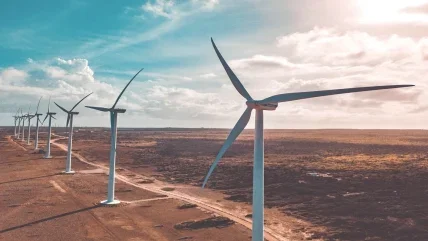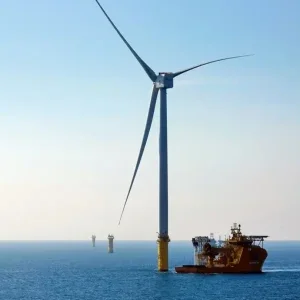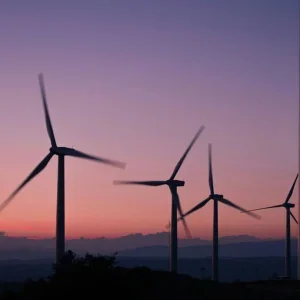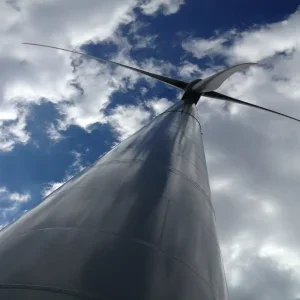
When William Kamkwamba was 13, his homeland of Malawi was ravaged by famine. Desperate to bolster his village’s meagre supply of water and electricity, he began experimenting with scrap timber, dumped in local construction sites. Combining his wood with bicycle wheels and a second-hand tractor mill, he soon crafted a homemade windmill, sprouting awkwardly between two plain-brick houses. His success, at first, was modest: the windmill barely powered a few lamps. But pretty soon, Kamkwamba used more timber to craft more windmills, eventually generating enough electricity to power his whole community.
Clearly, Kamkwamba’s ingenuity is remarkable – a fact recognised by Dartmouth College in New Hampshire, which offered him a full-ride scholarship to do environmental studies. In a more general way, however, the Malawi experiment is merely the latest example of how wind and wood fit neatly together. They may not have produced electricity, but wooden windmills were wildly popular until the industrial age, with metal replacements only appearing in the 1890s. No wonder. As Kamkwamba surely discovered, wood is light, cheap and plentiful, properties ideally suited to exploiting the wind’s natural bounty. That’s before you consider the fact that timber can easily be recycled, with old towers eminently valuable everywhere from pulp to construction. Yet, as the admission officers at Dartmouth College presumably realised, Kamkwamba’s story was partly so engaging because of its current unusualness. For if he used wood for his proto-turbine, modern commercial ones are normally made from steel: a lot of steel. According to estimates by ArcelorMittal, a Luxembourg steel manufacturer, up to 180t of the stuff are needed for every megawatt of offshore wind power. That makes sense: with the tallest towers under development now soaring some 274m into the sky, foundries are battling to fulfil demand. Not that wood-based wind energy is by any means dead. Given the whole industry is predicated on environmentalism, in fact, it’s arguably surprising just how long it’s taken to make a comeback – even as it now promises to transform the sector at speed.
200
The number of wooden turbines that Modvion will be building for RES through to 2036.
Modvion
Wind in the willows
Erik Dölerud is in an excellent position to appreciate the role of wood in the modern wind industry. A Swedish native, he’s spent over a decade immersed in the field, working on everything from hydrodynamic analysis to motion simulation. Moving to timber-centric turbine manufacturer Modvion in 2017, he now works as the company’s senior development engineer – a savvy move, given his employer lately raised €11m in new investment. As Dölerud emphasises, moreover, there are plenty of ways to understand this surge in popularity. One, he says, is that “engineered wood material production” has now reached cost-effective levels. Another, Dölerud continues, involves better technology. Where it historically required serious computers to untangle the precise cost-benefits of wooden blades, that work can now be done on a regular laptop.
All this excitement is doubtless reflected in Modvion’s own work. Quite aside from that welcome injection of cash, Renewable Energy Systems (RES), a major British renewable energy company, recently announced plans to use Modvion’s expertise to build around 200 wooden turbines through 2036, a deal that could represent over $353m. Nor is focus limited to towers. In Germany – as the name suggests – Voodin Blades is developing wooden blades, starting a journey that could one day banish unsustainable fibreglass to the scrapheap.
That last point is worth spending a moment on. For if better technology and investment are surely prodding wooden turbines into the spotlight, the limitations of existing materials are equally important. And if that’s increasingly obvious when it comes to blades – burning fibreglass emits toxic air pollutants like styrene – it’s arguably true of steel towers as well. Perhaps the most pressing concern here, suggests Professor John Hall of the State University of New York at Buffalo, is the steel supply chain. Still battling a pandemic-prompted price surge, with costs jumping by 100% in the 12 months following August 2020, wood increasingly feels like a plausible alternative.
Timber arguably beats steel in the sustainability stakes too. While the latter can definitely be recycled, Hall says that timber is a more innately “renewable” material, pointing out that thoughtful harvesting strategies are becoming ever more prevalent. Dölerud agrees, noting that old wooden towers can potentially enjoy a 300-year afterlife everywhere from housing beams to paper. These benefits are echoed by the wider statistics too. As Modvion has found, each 150m wooden tower captures 2,000t of CO2. Compare that with steel, which together with concrete contributes a stonking 15% of global carbon emissions, and it’s easy to see why a sustainability-obsessed industry should be so excited by timber.
Timbering up
Beyond these broader economic and environmental factors, meanwhile, there are strong technical reasons to embrace the wooden revolution. A famously tough building material, steel can’t easily be shaped, instead requiring manufacturers to awkwardly transport mammoth towers to their foundations. Light and flexible, wood suffers no such limitations, allowing engineers to slot tower sections together on site, potentially making building towers safer and cheaper than ever before – a particular boon given towers are only growing in size. By 2030, experts predict that the average new tower will reach a height of 115m, while Vestas recently unveiled plans for a monster 199m design.
Yet, if the theoretical advantages of wooden towers are secure, how are they faring in practice? Once again, Dölerud is a good person to ask here. In 2020, after all, he and his Modvion colleagues successfully got a 30m tower working on the Swedish island of Björkö. That’s literally shadowed by another project, this time a 100m machine for Varberg Energi. And, as Dölerud stresses, these varied tests are already proving their worth. For one thing, they’re helping the team clarify their decision to promote what he calls “common interfaces” with more traditional turbine designs – for instance, in the way the tower is connected to the foundation. At the same time, Dölerud continues, these realworld applications are helping Modvion understand how wooden towers function as so-called ‘dynamically loaded’ structures – in other words, structures whose forces change over time.
There may be areas to work through as well. As a natural material, for example, Hall notes that wood is isotropic. Unlike steel, which is strong whatever way you pull it, this means timber has particular weaknesses from particular directions. To explain what he means, the professor gives the example of a tree. “You pull a branch one way versus trying to pull it another – it’s going to be different.”
To be fair, Hall says that laminating wood from different directions can overcome these difficulties, which is exactly what Modvion is doing. Nor does this process of strengthening really increase the overall weight of a wooden turbine. As Modvion reports, their machines are still about 30% lighter than conventional towers.
Steel yourselves
With all this in mind, it’s tempting to imagine that wooden turbines are destined to dominate wind over the years ahead. If nothing else, this is reflected in the broad direction of travel. Modvion, for its part, has ambitions to become the leading supplier of wind turbine towers by 2030 – and its recent deal with RES is surely a good start. Beyond that, Voodin is rushing ahead too, installing its first 20m blades on a test turbine in central Germany at the end of 2022. “I don’t see any obstacle for this to become very competitive compared to steel-based or concretebased solutions,” is how Dölerud summarises the situation, adding that especially as towers continue to grow “we will see a strong drive towards timberbased power solutions in the future”.
100%
The jump in the cost of steel in the 12 months following August 2020 due to challenges around the Covid-19 pandemic.
International Energy Agency
Hall, for his part, is fairly optimistic too. If necessity is the mother of invention, he suggests that a shortage of cheap steel could be a “big driver” towards a timber-built tomorrow. Between sanctions targeting Russian mining, and the persistent struggle of mills to ramp up production post-Covid, this is certainly a possibility. As a recent report by S&P Global notes, moreover, electrical steel alone could be facing a 927,000t shortfall by the end of the decade. All the same, Hall is reluctant to discount traditional turbine manufacturing entirely. As he says, steel remains a “formidable opponent” to companies like Modvion, noting that in terms of the robustness of the material alone, wood could struggle to out-muscle steel entirely. The future may be wooden, in short, but William Kamkwamba is perhaps destined to be an outlier a little longer.






